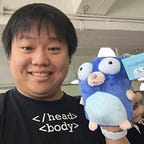I Gave Up My Desk for a Week and This is What I Learned
Management by wandering.
As my company’s grown, the number of internal / external meetings and tasks has become crazy. I have no time to wander around in office and have casual chats with fellows any more.
While people in the office have coffee and casual chats I am usually running for the next scheduled meeting or discussion item. Casual office chats is one of the things I miss most.
Some colleagues who have been with us for a while have said things were better in our old office (less noisy and busy). But with so many team members, I can’t keep track of the office changes anymore, so I can’t discuss with them about possible reasons for the increasing problems.
When a new Taipei team member joined us in the Hong Kong office for two weeks, we ran out of desks, so I gave him mine.
Without my desk, experiment with a new routine that could help me chat and reconnect to colleagues on a more casual basis. Below are some of my findings.
Wandering experiment:
I decided to use my Pomodoro technique rest time to have quick chats with fellows. I installed an app called Be Focused and gave myself a 5-minute break for every 25 minutes.
After every 4.5-hour session, I would get a 15-minute break. This time I took the break times seriously and moved seats (using the empty ones since some colleagues were away) or wandered around the office.
My observations:
I found that 5 minutes is too short, but I enjoyed the random chats and learnt some things from our newest team members, such as the latest Cantonese slang terms. I also learned more about how they saw me in general, since I don’t get to know them personally outside meetings like I used to.
Since colleagues see me wandering around throughout the day, I think I look less rushed and it’s easier for them to approach me if they have something on their mind (business and cultural).
Though I didn’t intend this in the beginning, having a floating work space helped me try out the “management by wandering” technique described in the management book Behind the Closed Door.
I was able to learn and observe many small details that I have heard colleagues mentioned recently, but I didn’t really understand the context for.
Sales & Consulting
For example, I was able to help my new sales team members understand some principles on how we handle enquiries. Principles usually come up during decision making when someone needs to do a task, but do not become meeting agenda items.
The new sales colleagues were discussing what materials were appropriate to give a potential client, since Oursky also works with entrepreneurs who may have no technical team.
What counts as help? Some colleagues might interpret it as preparing a basic wireframe or user story to educate the customer first. I personally prefer that our sales and PMs can advise on the business potential of an idea rather than doing material preparation.
Even if a client is willing to pay, we should explain to a client why we cannot take their project if we don’t think it is viable. But by spending a few minutes answering these high level questions, they have a better understanding of the company’s position and how to address future cases.
Project management / Quality assurance
I also saw the gaps between team coordination. For example, I overheard a requested build for an exploratory test from a QA team member while sitting beside a PM.
This helps me understand the time pressure that PMs have and why QA can become frustrated when builds cannot be scheduled at a specific time. It gave me a case to understand the tensions between the QA and PM teams that lead us to having a positive discussion on improving our project management and QA coordination process.
Development
I also saw how our development teams kept a lean team spirit where project managers may help developers with small tasks to push a project forward. For example, I overheard a PM offering to help a developer import images from Sketch into Xcode.
I was encouraged to see how our project teams balance standardized practices, like having a tech lead check pull requests, without becoming too rigid in project roles.
It also validated our approach with PMs who have technical understanding because they aren’t only chasing developers (adding to stress). Our PMs can also help relieve stress for others and push projects forward.
Lastly
By taking breaks to wander around, I was able to better understand how the company worked at an individual level.
While our company has quarterly one-on-one sessions, seeing how some tasks were handled helps provide more context. It put my ear back to the ground and in the future, I can also provide more informed advice to team members.
That’s it for now! I got my seat back, but I will continue to share future leadership and management experiments!
